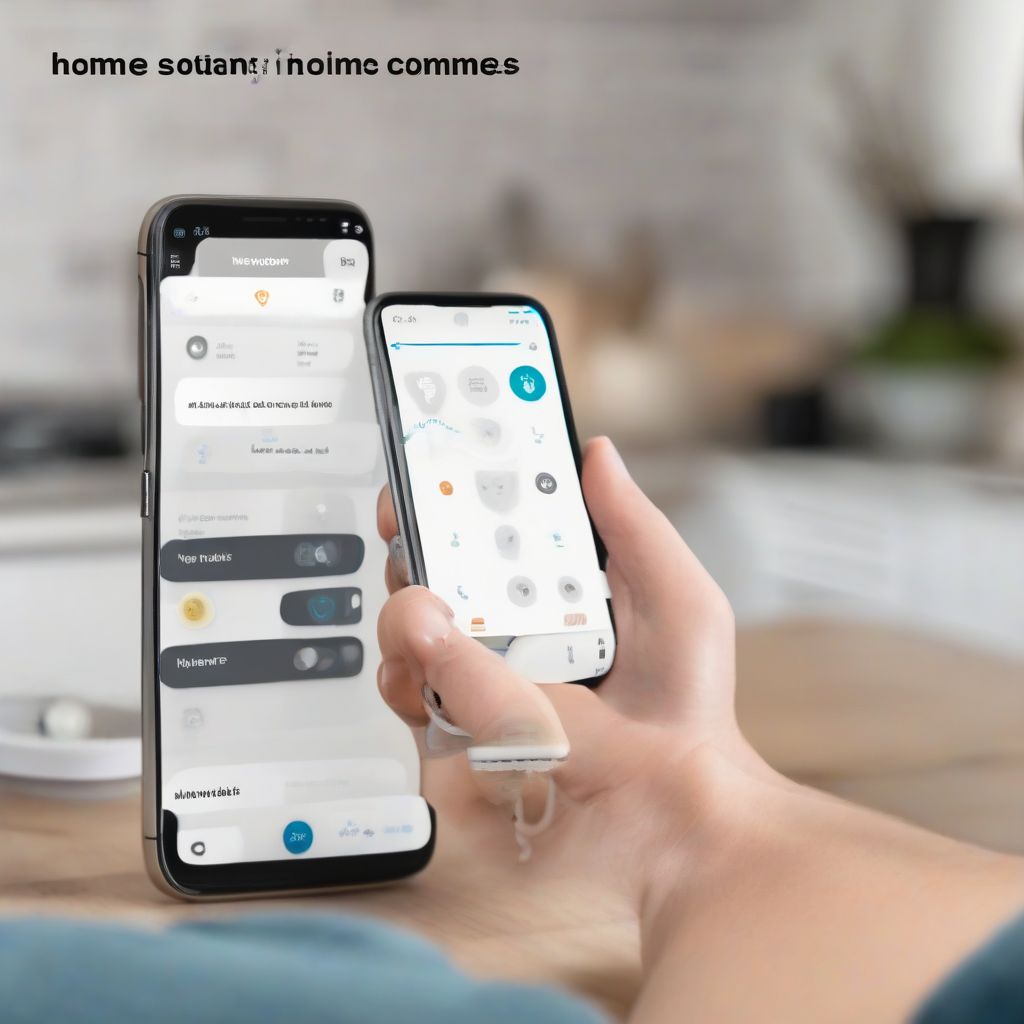Imagine this: you’re relaxing on your couch after a long day, and you want to dim the lights without lifting a finger. You say, “Hey Google, activate movie mode,” and just like magic, the lights dim, the curtains close, and your favorite streaming service pops up on the TV. This isn’t a scene from a futuristic movie; this is the power of customizable voice commands for smart home devices.
Understanding the Basics of Voice Commands
Before diving into customization, let’s understand how these commands work. Smart home devices utilize voice assistants like Alexa, Google Assistant, or Siri to interpret your spoken words and translate them into actions. These assistants rely on natural language processing (NLP) to understand the context and intent behind your commands.
Why Customize Voice Commands?
While default commands are convenient, customizing them adds a personalized touch to your smart home experience. Here’s why you should consider it:
- Simplicity and Convenience: Use easy-to-remember phrases instead of complex default commands.
- Personalization: Create unique commands that reflect your personality and preferences.
- Increased Efficiency: Activate multiple actions with a single command for streamlined automation.
- Accessibility: Customize commands for users with different needs or speaking styles.
How to Customize Voice Commands: A Step-by-Step Guide
The customization process varies depending on your smart home ecosystem and the specific device. However, the general steps remain similar:
1. Access Device Settings:
Open the app associated with your smart home device (e.g., Google Home app, Alexa app) and navigate to the settings menu.
2. Locate the “Routines” or “Custom Commands” Section:
Most smart home ecosystems offer dedicated sections for creating personalized commands.
3. Create a New Routine or Command:
Select the option to add a new routine or command. You’ll be prompted to define the trigger phrase and the desired action.
4. Define Your Custom Trigger Phrase:
This is where the fun begins! Choose a phrase that’s natural, easy to remember, and relevant to the action. For instance, instead of saying, “Alexa, set the thermostat to 72 degrees,” you could say, “Alexa, it’s cozy time.”
5. Assign the Desired Action:
Select the specific action you want your custom command to trigger. This could range from adjusting the thermostat or lighting to playing music or controlling smart appliances.
6. Test Your Custom Command:
Once you’ve created the command, test it out to ensure it works as intended. You can always edit or refine the command later.
Tips for Crafting Effective Custom Commands:
- Keep it Simple and Specific: Use clear and concise phrases that are easy to remember and pronounce.
- Be Mindful of Similar-Sounding Phrases: Avoid using phrases that might be confused with other commands.
- Leverage Context: Create commands that are relevant to the specific time of day, activity, or location.
- Test and Refine: Don’t hesitate to experiment with different phrases and actions until you find what works best for you.
Examples of Custom Voice Commands:
- “Alexa, start my morning routine” to turn on the lights, start the coffee maker, and read the news.
- “Hey Google, it’s movie night” to dim the lights, close the blinds, and turn on the TV.
- “Siri, I’m home” to unlock the door, turn on the lights, and adjust the thermostat.
Advanced Customization Techniques:
- Multi-Step Routines: Create commands that trigger a sequence of actions, like “Goodnight” to turn off lights, lock doors, and arm the security system.
- Location-Based Triggers: Utilize GPS technology to trigger actions based on your location, such as turning on the lights when you arrive home.
- Voice Profiles: Set up different voice profiles for family members to personalize commands and responses.
Troubleshooting Common Issues:
- Unresponsive Devices: Ensure your devices are connected to the internet and within range of your voice assistant.
- Command Misinterpretations: Experiment with different phrasings or adjust your microphone settings.
- Conflicting Commands: Check for any overlapping or conflicting routines that might be interfering.
The Future of Voice-Controlled Smart Homes:
As technology continues to evolve, we can expect even more sophisticated voice control capabilities in the future. Imagine controlling your entire home with intuitive voice commands, from adjusting the temperature to managing your schedule.
 Customizing Voice Commands
Customizing Voice Commands
Conclusion:
Customizing voice commands for your smart home devices is a simple yet powerful way to personalize your experience and make your life easier. By following the steps outlined in this guide, you can unlock the full potential of your smart home ecosystem and enjoy the convenience of voice-controlled living. Start experimenting with custom commands today and transform the way you interact with your home!
[amazon bestseller=”smart home devices”]
